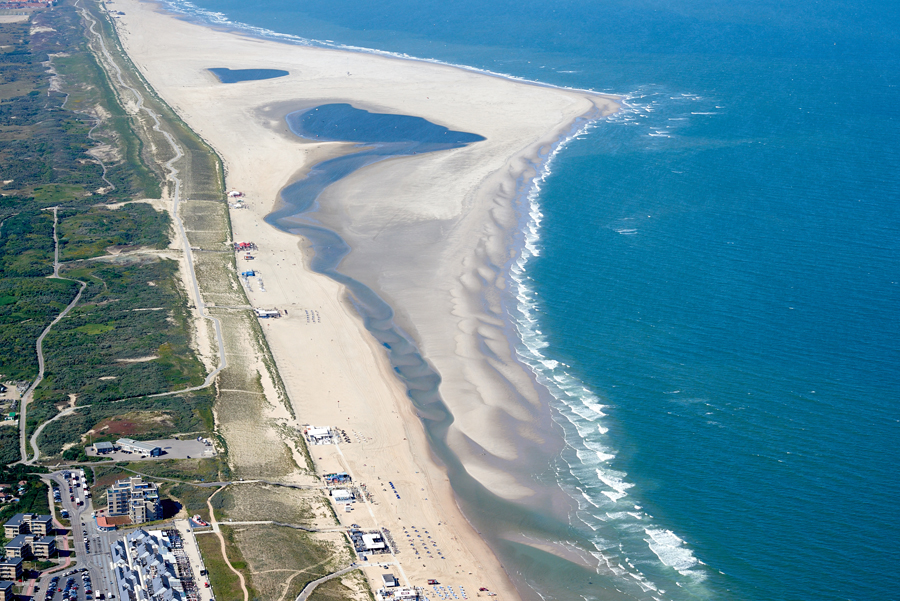The Sand Motor is a ‘mega-nourishment’ implemented in the Delfland Coast (North Sea coast of South Holland, The Netherlands) as innovative pilot project to test the upscaling of regular sand nourishment along the Dutch coast, carried out by Rijkswaterstaat (the Dutch Ministry of Infrastructure and Water Management Works). The regular program is aimed at preservation of the coastline and protection against flooding. The Sand Motor also has the purpose to create (temporarily) space for leisure activities and nature development, as well as acquiring better understanding of the behaviour of the coastal system. These multiple purposes make it an example of a Building with Nature (BwN) solution that uses natural processes to fulfil multi-functional purposes in coastal management.
The intervention involved a huge amount of sand extracted offshore and deposited along the coast in a single operation, to form a hook-shaped peninsula. By making use of natural processes to redistribute the sand over time, the Sand Motor is a buffer against sea level rise, also mitigating the impacts of storm surges and coastal flooding. The intervention equals the amount of regular sand nourishment in the region for twenty years. This implies that, except for possible exceptional situations, during this period, and probably even longer, no additional nourishment is needed.
The first complete assessment of how this solution has been working was formulated in 2016, after the first four years of monitoring, indicating success in coastal protection, particularly in the vicinity of the Sand Motor. New habitat for local flora and fauna was created and a new large sand shoal is offering new opportunities for recreational activities, meeting the initial expectations.



